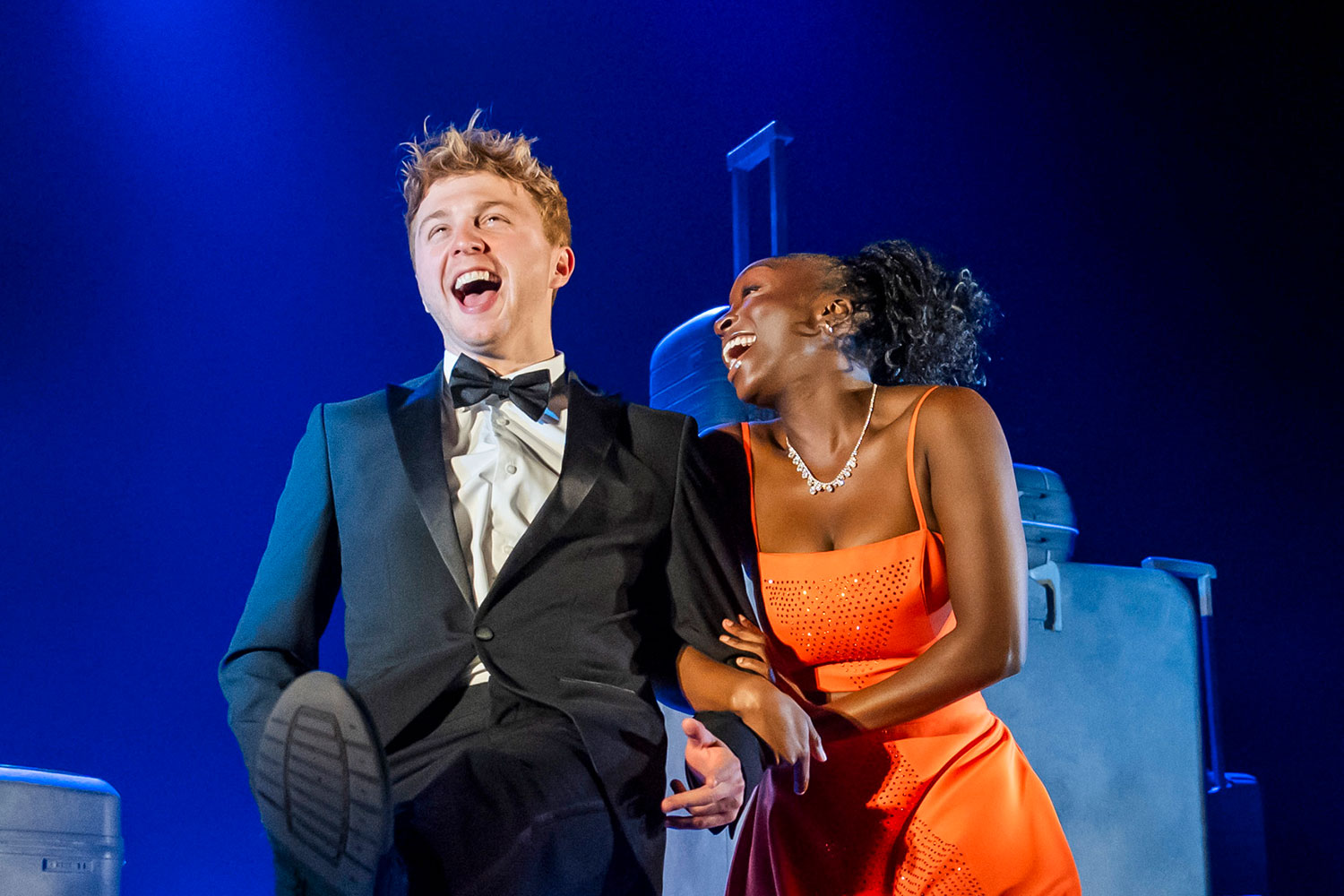Michael Coveney: Shakespeare goes round & round
Like a latterday and slightly giddy Francis Drake, I circumnavigated the stunning new British Musuem exhibition, Shakespeare: staging the world, several times yesterday morning, and not just because I couldn’t find the exit.
The principle behind the show, surely one of most concentrated and most fascinating London has ever seen, is the same as in the BM director Neil MacGregor’s BBC Radio 4 series, A History of the World in 100 Objects. Shakespeare’s world is conjured in artefacts, manuscripts, drawings and mementoes. There’s even a witch’s cursing bone stuck in a piece of bog oak.
That certainly helps explain the spooky litanies of the witches in Macbeth, just as a sucket fork for sweetmeats, and the skull of a bear, both excavated from the site of the Rose Theatre, make newly vivid our idea of Shakespeare’s brutal, popular playhouses.
And as you wander round (and round) the partially wooden O within the museum, you are wafted by the videoed sight and recorded sound of RSC actors reciting the great speeches: here’s Paterson Joseph reprising his not unreasonable Brutus, there’s Antony Sher, boiling and fit to burst as Shylock, asking “Hath not a Jew eyes?”; Harriet Walter is an expiring Cleopatra, Jonathan Slinger a desperate Macbeth on a downward slope, Jonjo O’Neill a starkly posing Richard III, curiously more persuasive than he was in the theatre.
In the last room, there’s a magical film of Caliban and Trinculo forming a crab-like liaison (“Misery acquaints a man with strange bedfellows”) and Ian McKellen bidding farewell to his art, declaring that the revels now are well and truly ended.
Here. too, are maps and globes galore, showing how Shakespeare’s world was one of travel and tourism (though he himself probably went no further afield than the Mermaid tavern in London and the Dirty Duck in Stratford-upon-Avon), an intensely exciting period of charting the world elsewhere for the very first time.
Maybe this exhibition will put an end to the ridiculous PC nonsense of only black actors being entitled to play Othello. It seems clear that the portrait of the Moroccan ambassador to London round about 1600, Abd el-Ouahed ben Massaoud, is a source for Shakespeare’s character who, despite his “thick lips” and “sooty bosom,” is a noble Moor, not a Caribbean calypsoist. Ben Kingsley came closest to this authentic idea many years ago and so, in an otherwise disastrous performance, did Paul Scofield.
Neil MacGregor introduced the exhibition yesterday, thanking the sponsors BP, as well as the RSC, whose designer Tom Piper has realised the theatrical aspects of the show within the original design concept – he’s an expert in cylindrical formats, as we knew from his work on the Michael Boyd’s Histories – and then handing over to the formidable double act of Shakespearean (and RSC board member) Jonathan Bate and the BM’s curator of Renaissance Europe, Dora Thornton.
They spoke with wonder and enthusiasm about their own work, which is perfectly understandable. Their superb catalogue – which I have been thumbing through avidly for several weeks – imagine my irritation at seeing Press copies flogged on the door for £10 less than the price I paid – is a beautifully illustrated treasure trove that is a “must have” on any Shakespeare shelf.
It seems marvellously apt that, in this year of overlapping festivals and the Olympics, the beating heart of Shakespeare should be at its centre, celebrating the Elizabethan miracle of adventure and curiosity that defined the age, and its drama; and that the “imagined” and real worlds of Shakespeare’s theatre should be crammed within this modest setting, “turning the accomplishment of many years into an hour glass.”
So, you can wander from London to the Forest of Arden, to Rome and Venice, and way beyond to a brave new world of magical possibilities and foreign travel. Puck says he will put a girdle round the earth in forty minutes, and it is a well known fact that the first Russian sputnik did the same thing in thirty-eight. Shakespeare never had to visit a place in order to know about it. And anyway, we can piece out his imperfections with our own thoughts.
What a fantastic place the British Museum is. I try not to go too often because I just end up eating cakes and buying books and never looking at the Greek and Roman statues. And this collaboration between its top scholars and the RSC marks a red letter day in its history.
Which also happened to be Nelson Mandela day, suitably enough. And as part of the affiliated lecture programme, you can hear the RSC’s artistic director designate Greg Doran, responsible for the scintillating all-black RSC Julius Caesar coming to the Noel Coward Theatre next month, discussing Shakespeare in performance with his South African partner Antony Sher on 5 October.










